When I asked if he had any idea of where he was buried, he replied, "No, just somewhere near a place called Carvins Cove". I asked a couple more questions, but he didnt know any answers. He did email me a couple hours later, and say, "Oh, from what I heard he is buried in an unmarked grave". Just the immediate watershed area of Carvins Cove is over 10,000 acres of thick forest.
That changed everything to say the least. No longer was it a simple project. In my spare time, I researched through graveyard listings for Roanoke and Botetourt County. Nothing was found at all indicating anything about and graves near Carvins Cove. So, I researched various things on the internet for the next couple weeks still not finding anything. I decided I would try to research a little more on this soldier and his family tree.
As it turns out, he had lived in Botetourt County, 14 miles southwest of the courthouse. He had been seriously wounded at the battle of Cold Harbor. Cold Harbor was one of the bloodiest battles of the Civil War. General Grant's hopeless frontal assault over Robert E. Lee's well entreched men was nothing more than slaughter. Around 108,000 Union soldiers challenged 62,000 Confederates, and yet, the Confederate's only sustained around 3,000 battle deaths. The Union however, sustained over 13,000.
Shepherd Pollard was wounded in his upper arm, and spent time in Chimborazo hospital in Richmond. His healing process was slow, and from family legend, he walked home from the hospital as soon as he was well enough to travel. In 1873, he sold his land in Botetourt County, and purchased new land, near Bennett Springs, near the Roanoke-Botetourt County line. He lived on this property with his wife Sara until his death in 1908. Researching his family tree, I discovered his children had spread to the Southern states. One moved to Waycross, Georgia, and a couple more to Florida.
I was getting nowhere with his family tree. Although it was interesting, it wasnt yielding any clues about his death. Then one day I had the biggest stroke of luck one could possibly have. I was looking at a book in the Virginia room, about the families of Botetourt County. I dropped the book, and a handwritten page fell out of the back. It was about the Pollard family. Several of the names matched those I had found, and then I found Shepherd's name wrote at the top. It even included a simple sketched family tree.
It included contact information for the person that wrote it. I tried to contact the writer of the paper, but the address and phone number were invalid. The paper looked to be about 20 years old. There was one one person at the bottom of the family tree that I thought would still be alive. There was only one phonebook listing for this name, so I took a chance and called it. It paid off.
He seemed surprised that someone would call him out of the blue to talk about his family tree, but he was really interested in it. I asked him about the grave. Surprisingly, he said he knew where it was. Now I was excited. He said it was unmarked, about a mile back an access road kept by the Water Authority. Thats where the fun begins.
The gate was locked, and it was at least a hard miles hike to the location of the graves, something this man was not capable of. For over a month, I talked to everyone in Water Authority administration about gaining access through the gate, yet not one person seemed interested in it. Until I mentioned the word " grounds for lawsuit", and read them Virginia's grave laws. After that, the next day I was met by a manager and he actually allowed me to put my own lock on the gate.
After that, the first time getting to the grave was interesting. We drove down the road, and the descendant seemed to lead us right to it. He said the graves were right behind the foundations of his house. We found the foundations, and we headed around. We were led pretty much right to the graves. It was nothing more than a sinkhole, about 4 feet across, and two feet deep at the lowest point. It is a common occurence for old graves to sink and collapse. It was before the age of vaults, and wooden caskets would begin to decay and eventually collapse, therefore causing most graves to at least have a sunken appearance.
We had located it, by a large tree. Now it was time to get to work. I notified the descendant in Jacksonville. To say he was happy is an understatement. I ordered Shepherd's military muster rolls, and filled out the paperwork for a government headstone. A little under a month, it came in. By this time, it was November. I had started to plan a memorial service for Shepherd, with military honors. I had notified all his descendants I had found over the course of researching the tree.
A couple of my friends helped me install the stone on November 11th. I installed it with a brick and concrete foundation weighing 180 pounds. The stone inself weighs 215 pounds. I wanted it to be permanant. We spent the rest of the day and another whole day a week later cleaning the site up and blazing trails for the dedication.
A week later, we held the dedication. Though the man who originally asked me to find the grave couldnt attend, there was over 28 descendants of Shepherd Pollard present. Some came in from Georgia, and Florida, and Northern Virginia, and Pennsylvania. Most had never met before that day, they didnt even know the others existed. Most everyone exchanged contact information, and they have held several family reunions since.
After the ceremony, the project was finally finished. Or so I thought. A short time later, I got an email from a mountain biker, who biked through a nearby trail and saw his gravestone. She found my name on the internet when she looked up his name. She told me of a new newspaper, called the Roanoke Star, and that her friend published it. She said he would love to publish a story about it. It turned out to be a very large article, complete with pictures and even a picture of me and the grave on the front page of the paper.
The project gained a lot of publicity from that story. I was also then informed that I was now a candidate for the Jackson medal, the second highest award in the Military Order of the Stars & bars, another historical society I had been in since I was 12. Overall, the project took over nine months to complete. It was one of the biggest projects I had done so far. I took it head on, and went through Roanoke County, Roanoke City, Botetourt County, Roanoke City Parks & Rec, and the Western Virginia Water Authority, all at age 19.
The area leading to the graves.
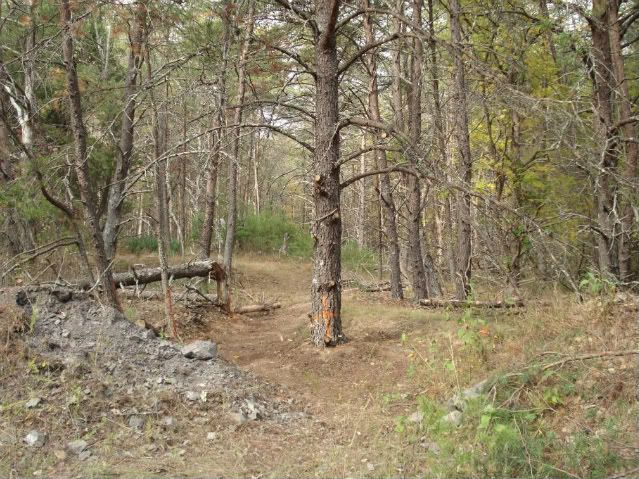
Me at one of the first visits to the graves. Things were so thick I had to cut my way back to the graves with a hatchet.

The cleanup workgroup, Myself, David Lamb, Mark Craig, Frank Burks.
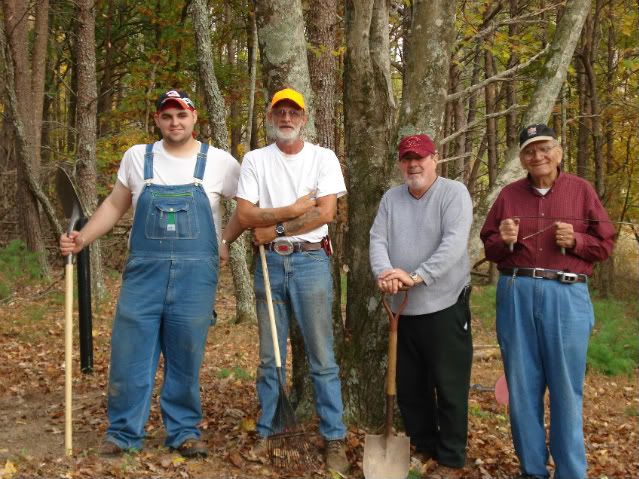
Filling in the grave. One wheelbarrow load down, 20 to go.
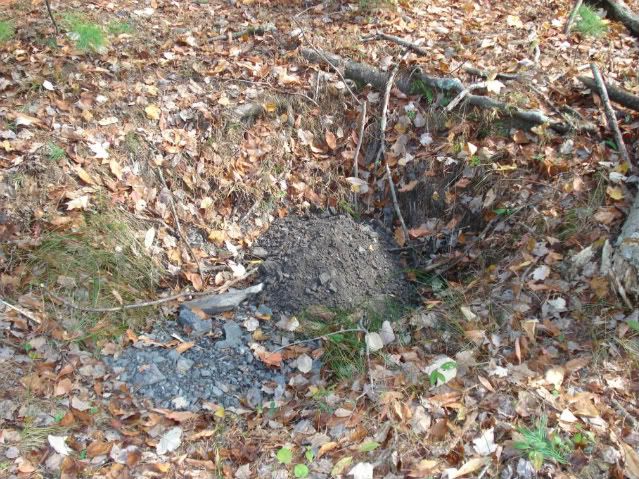
David Lamb and I installing the stone.
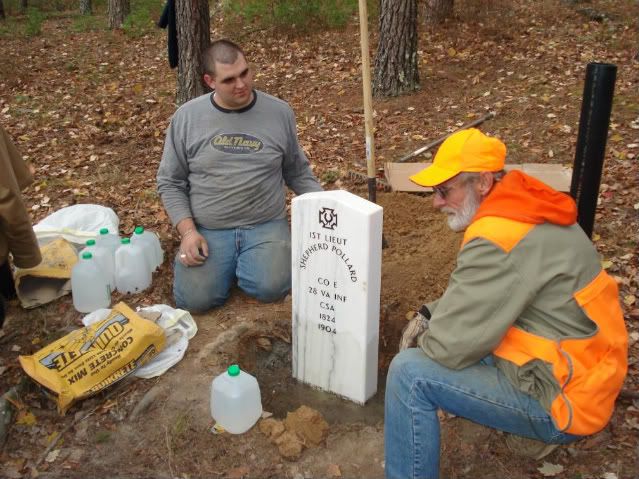
The stone.
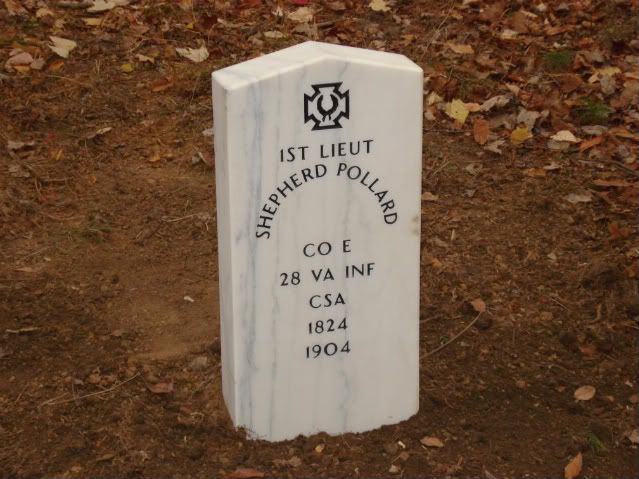
Me and David Lamb at the finished gravestone.
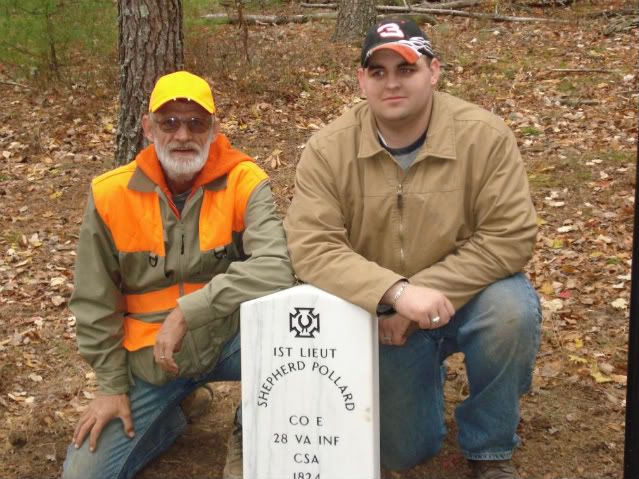
Part of the family at the dedication.





